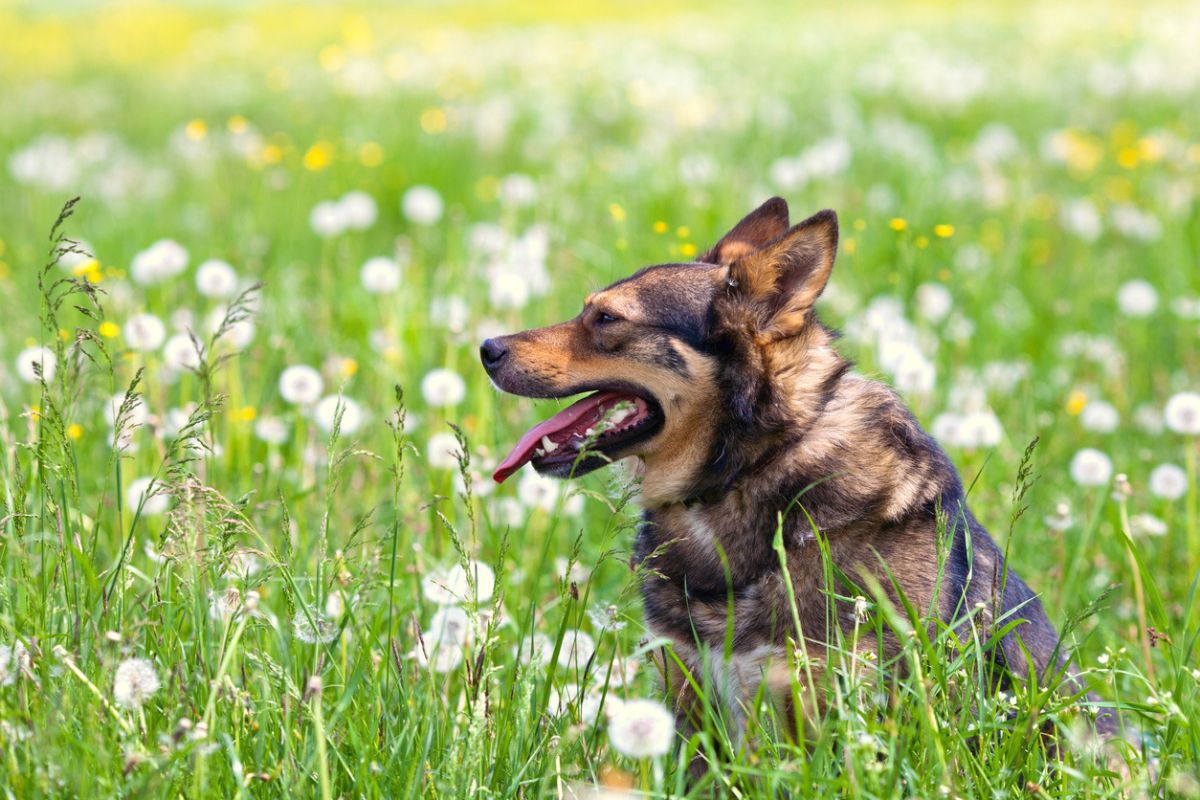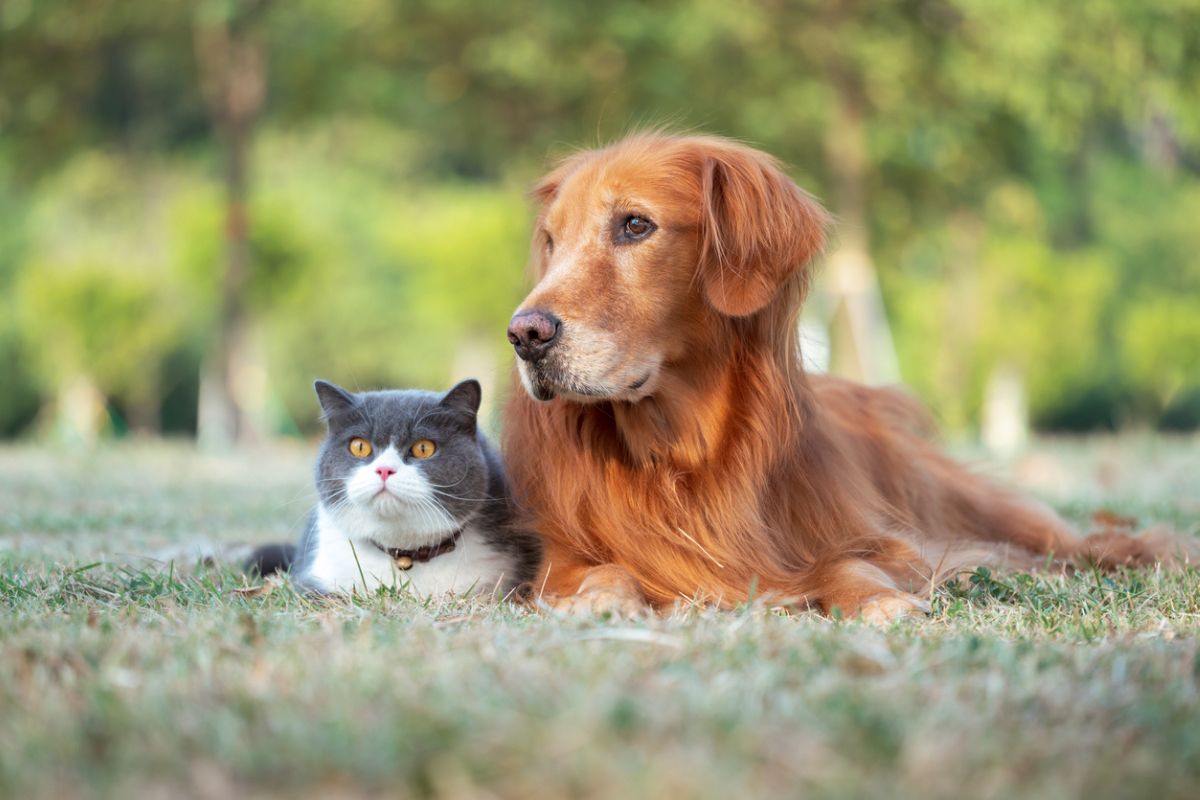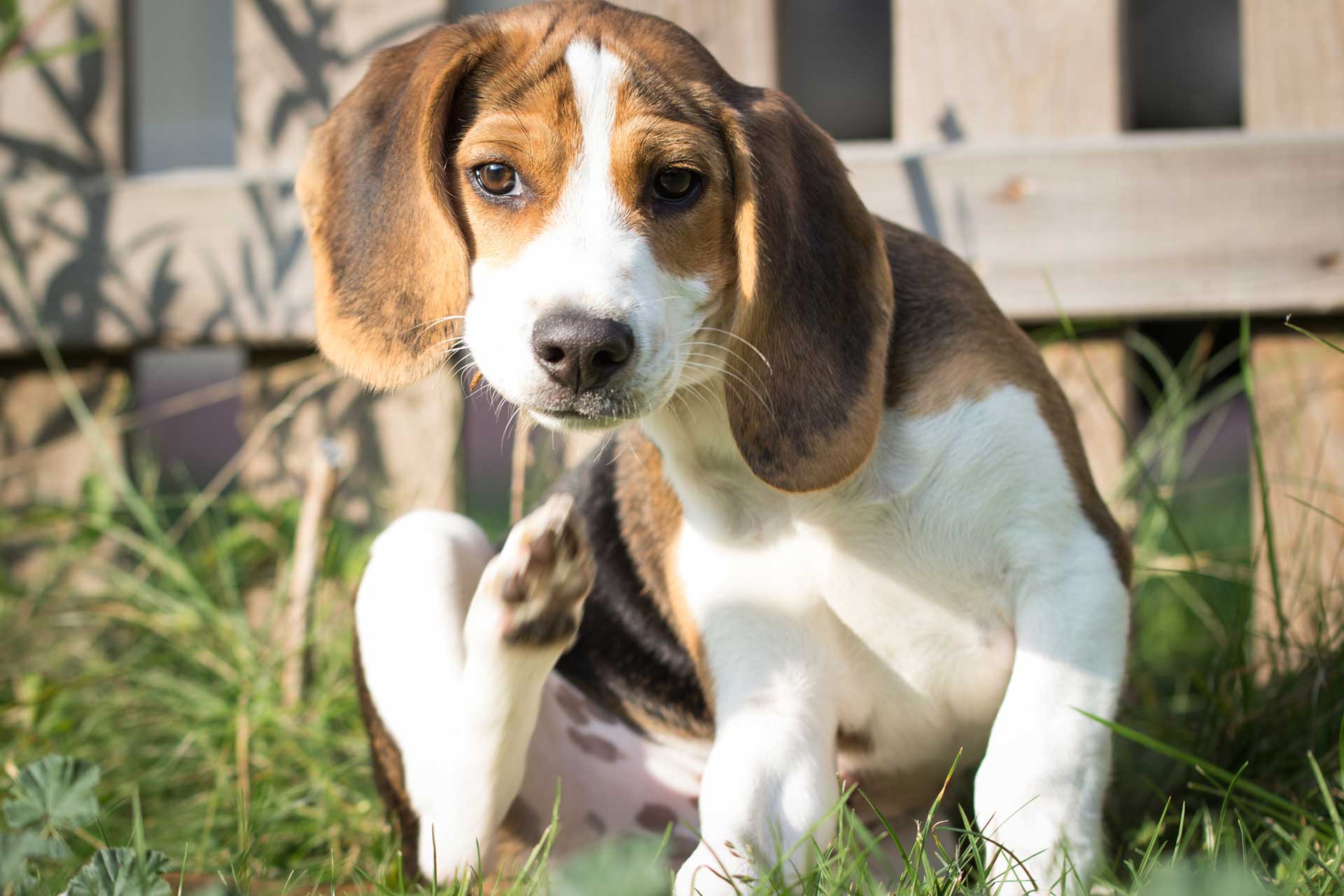Grass seeds may seem harmless, but they can cause big problems for dogs and cats. These tiny seeds are often found in parks, fields, and even your backyard, where they can easily attach to your pet’s fur and work their way into their skin, ears, paws, and other sensitive areas. If they’re not treated, they can cause infections, abscesses, and may even require surgical removal. Learn more about grass seeds and how to prevent them.
What are grass seeds?
Grass seeds are small, arrow-shaped seeds that come from long grasses, especially in late spring and summer. They’re designed to travel and spread, which is why they stick so easily to fur and clothes. Because they have a sharp, pointed structure, they can burrow into soft tissue, making them risky for pets that spend time outside.
Likely places for grass seeds to get caught on your pet
Grass seeds can lodge themselves in various parts of your pet’s body, causing different issues. Here are some common places they can get stuck:
- Paws: Grass seeds can get wedged between your pet’s toes or into the pads of their paws, leading to swelling, redness, and pain. Your pet might start limping, licking their paws a lot, or avoiding walks.
- Ears: The shape of grass seeds makes it easy for them to enter your pet’s ear canal, where they can cause discomfort and infection. If your pet has a grass seed in their ear, they may shake their head, scratch at their ear, or act irritable.
- Eyes: Grass seeds can get caught in your pet’s eyes, causing irritation, tearing, and redness. If not removed, they can scratch the cornea or cause infections.
- Nose: Pets, especially dogs, who love to sniff around during walks, can get grass seeds in their nasal passages. This can cause sneezing, nasal discharge, or even breathing issues.
- Skin: Grass seeds can also dig into your pet’s skin, particularly in areas with long fur. Once under the skin, they can travel deeper, causing abscesses and infections.
Signs your pet might have a grass seed
It’s important to recognise when a grass seed might be bothering your pet. Here are some signs to watch out for:
- Limping or favouring one paw
- Excessive licking or chewing at a specific spot
- Head shaking or ear scratching
- Red, swollen, or discharge-filled eyes
- Frequent sneezing or nasal discharge
- Swelling or lumps under the skin
- Reluctance to walk or discomfort while moving
If you notice any of these signs, check your pet for grass seeds and visit your vet.
Why grass seeds are dangerous
Despite their small size, grass seeds can cause big health problems if not treated. Their pointed shape allows them to keep moving through the body, potentially leading to:
- Infections: As grass seeds burrow into the skin or other tissues, they create an entry point for bacteria, which can cause painful infections that often require antibiotics and sometimes surgery.
- Abscesses: When a grass seed travels beneath the skin, the body may try to contain it by forming an abscess, a painful, pus-filled swelling that requires draining.
- Internal damage: In severe cases, grass seeds can travel deeper into the body, affecting organs or becoming lodged in the lungs, which can be life-threatening.
Prevention and treatment for grass seeds
It’s easier to prevent grass seed problems than to deal with them later. Here’s how you can protect your pet:
- Regular grooming: If your pet has long fur, especially around their paws, ears, and belly, regular grooming can help prevent grass seeds from becoming embedded. Trimming fur during grass seed season can also help reduce the risk.
- Checks after walks: After outdoor walks, particularly in grassy areas, inspect your pet’s paws, ears, eyes, and fur for any seeds or debris. Removing grass seeds early can prevent them from burrowing into the skin.
- Avoid tall grass: Try to avoid letting your pet roam in areas with tall, seeding grasses, especially during spring and summer when grass seeds are most common.
If you suspect a grass seed has entered your pet’s body, take your pet to the vet as soon as possible. Depending on the seed location, your vet might need to sedate your pet to safely remove it and treat any infection.








